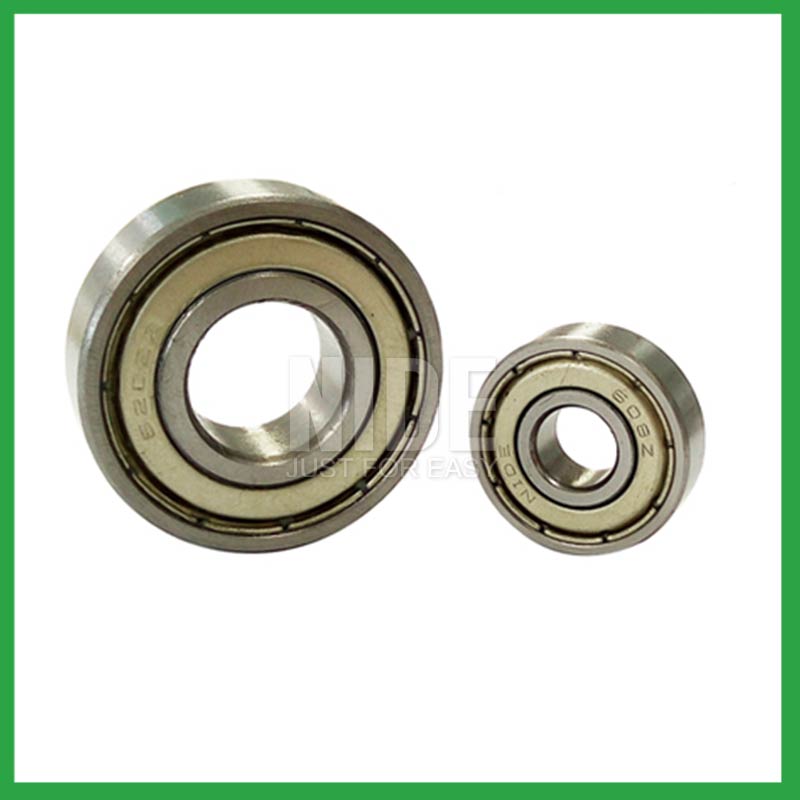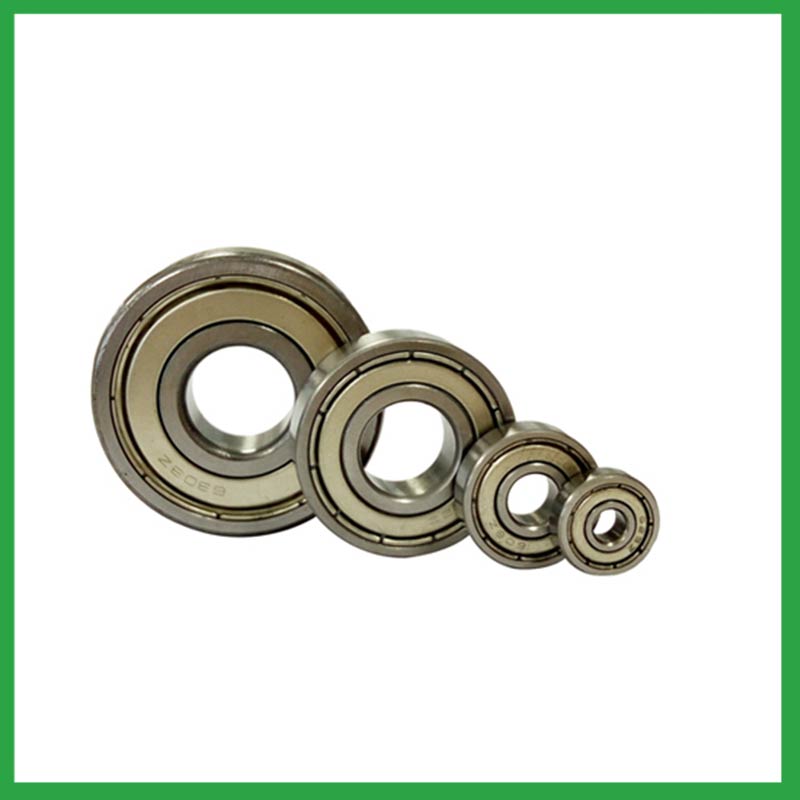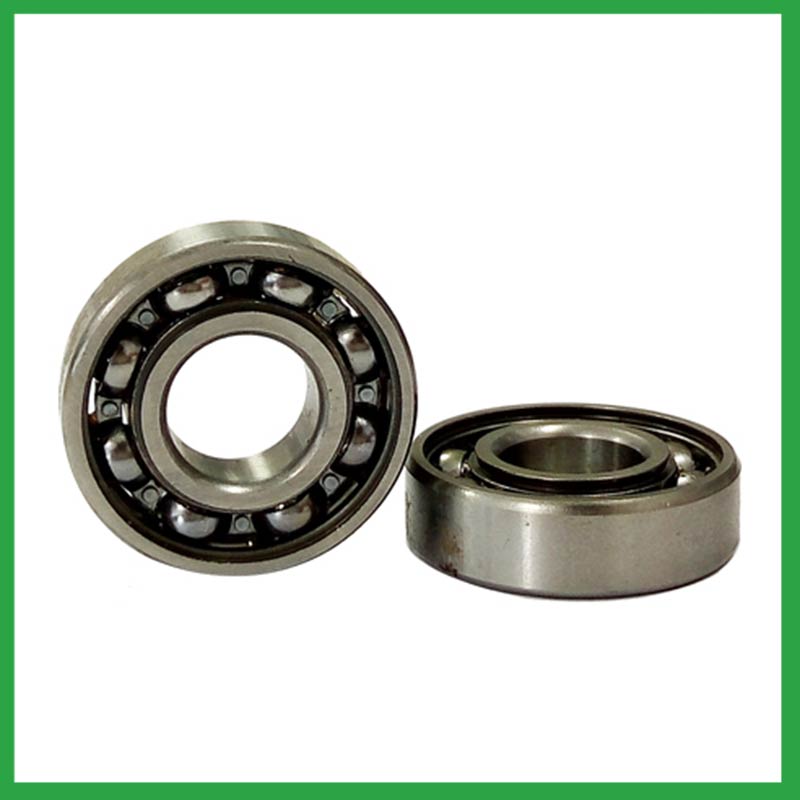PRODUCTS
CONTACT US
Ningbo Nide International Co., Ltd.
一一
· Contact person:Jack Zeng
· Mob/Whatspp/WeChat:0086-13738869026
· Email:emarketing@nide-group.com;marketing4@nide-group.com
· Add:No. 169, Wohushan Road, Daqi Subdistrict, Beilun District, Ningbo, China

Nide team could manufacture ball bearing as per customer’s drawing and samples.
If customer only has samples, we could also design drawing fo r our customer.
We also provide customized service.
Our ball bearing is widely applied the different industrials.
Ningbo Haishu Nide International is a professional manufacturer engaged in bearing research and sales. The factory covers an area of over 9000 square meters and has over 100 employees. The company has modern production equipment and advanced testing instruments. We produce deep groove ball bearings, spherical roller bearings, carbon brush,magnet,commutator,insulation paper,ball bearing,motor cover and lamination, etc. The bearing accuracy is P0, P6, P5, P4 levels, widely used in servo motor,BLDC motor,single and three phase induction motor,electric automotive motor,electric bicycle motor,compress motor,water pump motor. Passed ISO9001:2015 and CE status.
We adopt first-class production equipment and a comprehensive testing system, and hire excellent technical personnel for operation and management. Our bearings are now very popular in the United States, Canada, Türkiye, Russia, Argentina Timor-Leste,Sierra Leone,Tanzania,Nauru and other countries and regions.Nide wishes is to provide world wide customers with one-stop service for the motor manufacturing.

| Parameter | Information |
| Product Name | heavy duty roller ball bearing |
| Brand Name | Nide |
| Place of Origin | Ningbo,Zhejiang |
| Type | Ball |
| Material | ceramics, etc. |
| Sample | Avaible |
| Warranty | 3months-1year |
| Lubrication | Dry/ Oil |
| Application | food processing machinery,high-speed electric tools, etc. |
| Port | Ningbo/Shanghai |
| Size(mm) | customize |
| Export Country | Argentina,Brazil,South Korea,Anguilla,Macedonia,Turkmenistan,Uganda...etc |
| Export region | Europe,Africa,Oceania... |
| Certification | ISO 9001 Certification,CE-stator coil winding inserting machine,CE-stator coil lacing machine,etc |
| Precision Rating | as per customer's requirement |
| Feature | Simple structure,Strong carrying capacity...etc |
| Packaging Details | Suitable for sea transportation |
| Color | white+customized |
| Seals Type | Rubber seals |
| Service | Prompt Delivery |
| Supply Ability | 100000-500000 Piece/Pieces per Month |
| Lead time (days) | 15-20 (To be negotiated) |
Please note: The above table data is for reference only. For specific information, please contact us.
Bearings with ball bearings as rolling elements mainly include self-aligning ball bearings,cylindrical roller bearings,adjustable ball bearings,angular contact ball bearings, etc.
During the installation process, pollution from dirt and wear media should be prevented;
Temperature and humidity should be controlled to avoid excessive temperatures during startup and operation;
It should be operated and lubricated in the correct reverse direction to avoid unnecessary damage.
Ball bearings have many advantages, making them highly competitive in the market.
Firstly, they are very durable and have good wear performance, making their service life longer than many other types of bearings.
Secondly, they are easy to install and can provide low friction performance in various applications.
Thirdly, they require a relatively low level of maintenance, making them cost-effective.
In addition, compared to many other types of bearings, their purchase cost is relatively low, making them an economical choice.




heavy duty roller ball bearing---FAQs Guide
2.Are there heavy duty roller ball bearing designed for extreme temperature environments, such as cryogenic or furnace applications?
3.What is the typical noise level associated with heavy duty roller ball bearing, and how are noise-reduction techniques applied?
4.Can heavy duty roller ball bearing operate in high-temperature environments like industrial ovens or furnaces, and how are they protected from heat-related damage?
5.How do heavy duty roller ball bearing handle radial loads, axial loads, and combined loads, and what are their load-carrying capacities?
6.What are the common materials used in heavy duty roller ball bearing manufacturing?
7.Do heavy duty roller ball bearing come in various tolerance classes?
8.Can heavy duty roller ball bearing be used in vacuum or cleanroom environments, and what measures are taken to prevent outgassing or contamination?
9.What anti-corrosion coatings or treatments are available for heavy duty roller ball bearing used in marine or outdoor applications?
10.How do manufacturers address concerns related to bearing noise and vibration in sensitive equipment?
11.As a heavy duty roller ball bearing manufacturer,can you supply samples?
12.How do different heavy duty roller ball bearing designs, such as deep groove, angular contact, or thrust bearings, cater to specific applications?
13.Are there self-aligning heavy duty roller ball bearing that accommodate misalignment and shaft deflection in rotating equipment?
14.Are there heavy duty roller ball bearing designed for use in critical medical equipment?
1.Can heavy duty roller ball bearing be used in both vertical and horizontal orientations?
Sleeve Bearings: Sleeve bearings, also known as plain bearings, employ a simple yet effective mechanism. A cylindrical sleeve separates the rotating shaft from the stationary portion of the bearing, reducing friction and enabling smooth rotation. Sleeve bearings are characterized by their quiet operation, cost-effectiveness, and suitability for horizontal mounting orientations.
Ball Bearings: Ball bearings introduce small metal balls between the moving parts, providing enhanced durability and reduced friction. This design allows for smoother and more efficient rotation, making ball bearings well-suited for high-performance applications and vertical installations.
2.Are there heavy duty roller ball bearing designed for extreme temperature environments, such as cryogenic or furnace applications?
High temperature heavy duty roller ball bearing use specialized lubricants to stand up to high temperatures. Grease-packed bearings are pre-filled with fluorine grease for high temperatures, while YS and SJ bearings use molybdenum disulfide (MoS2) solid lubricant to withstand temperatures up to 350°C and 400°C respectively.
3.What is the typical noise level associated with heavy duty roller ball bearing, and how are noise-reduction techniques applied?
To measure in accurate way the heavy duty roller ball bearing noise under rotation during their manufacturing process is a key activity particularly in the production of medium, small and ultra-small deep groove ball bearings. This capability in bearings noise analysis has become the real distinguishing element between a standard bearings noise equipment and a superior class one.
The various types of vibration and sound in rolling bearings can be grouped in four main categories: structural, manufacturing, handling and other. The structural vibration consists mostly of race, click, squeal and cage noise: it can be continuous or intermittent depending on specific cases. The manufacturing vibration is instead related to the waviness noise generated by the geometrical imperfections of inner and outer ring and of rolling elements, being always continuous in nature. The so-called handling vibration is normally associated with flaw and contamination and is generating – in most of the cases – irregular noise. Then there are other types of vibrabition that include noise generated by sealing and lubricant (irregular) or by runout (continuous).
4.Can heavy duty roller ball bearing operate in high-temperature environments like industrial ovens or furnaces, and how are they protected from heat-related damage?
heavy duty roller ball bearing are capable of working at temperatures up to +842°F (+450 °C). Special lubricants, seals and coatings make this possible by protecting the ball bearings from heat damage.
5.How do heavy duty roller ball bearing handle radial loads, axial loads, and combined loads, and what are their load-carrying capacities?
The type of bearing used also varies between these loads. While deep-groove heavy duty roller ball bearing are better equipped to handle radial loads, thrust ball bearings are designed for axial loads. However, it's essential to note that most bearings, such as angular contact ball bearings, can handle both radial and axial loads.The Bearing Static Capacity, Co, is the maximum load that can safely be applied to a non-rotating bearing that will not cause subsequent bearing operation to be impaired. It is based on calculated contact stress at the center of the most heavily loaded rolling element where it contacts the Inner Race.

6.What are the common materials used in heavy duty roller ball bearing manufacturing?
Most heavy duty roller ball bearing are made of a type of steel known as high carbon chromium steel, often called chrome steel. This is used for reasons of cost and durability. Bearings are also made from other materials such as stainless steel, ceramics and plastic.
7.Do heavy duty roller ball bearing come in various tolerance classes?
Bearing tolerances are standardized by classifying bearings into the following six classes (accuracy in tolerances becomes higher in the order described): 0, 6X, 6, 5, 4 and 2.
8.Can heavy duty roller ball bearing be used in vacuum or cleanroom environments, and what measures are taken to prevent outgassing or contamination?
Bearings specify stainless steel for vacuum or cleanroom applications as stainless steels used for the rings, balls and retainer exhibit low outgassing. They usually supply open or shielded stainless steel bearings as vacuum bearings as these will outgas less than a nitrile rubber sealed bearing.
9.What anti-corrosion coatings or treatments are available for heavy duty roller ball bearing used in marine or outdoor applications?
Corrosion Resistant Coatings.Whether heavy duty roller ball bearing are manufactured from stainless steel or from chrome, anti-corrosion coatings can be applied. Compared to the natural state of the base metal, these coatings make surfaces less chemically reactive. In their selection of treatments or coatings, some industries choose to consult with the manufacturer of the bearings they use. This is because surface engineering is a highly specialized undertaking. These coatings used for their anti-corrosion properties to protect bearings in harsh environments include the following:Passivation (of stainless steel),Carbide and titanium nitride,Galvanized zinc,Nickel plating,Cadmium plating,TDC (thin dense chrome).
10.How do manufacturers address concerns related to bearing noise and vibration in sensitive equipment?
From a heavy duty roller ball bearing manufacturing perspective, a low noise or vibration rating is achieved by paying attention to the surface finish of the raceways and balls, their roundness, and selecting the correct cage design. Finely filtered low noise greases can also be used to reduce vibrations.

11.As a heavy duty roller ball bearing manufacturer,can you supply samples?
Sure, samples can be provided free of charge, and the buyer pay the postage of the sample.
12.How do different heavy duty roller ball bearing designs, such as deep groove, angular contact, or thrust bearings, cater to specific applications?
Deep groove heavy duty roller ball bearing: Deep groove ball bearings are the most common type. They can handle both radial and axial loads. Angular contact ball bearings: Angular contact ball bearings have higher than average internal axial clearance. They can handle axial loads in one direction and moderate radial loads.
13.Are there self-aligning heavy duty roller ball bearing that accommodate misalignment and shaft deflection in rotating equipment?
These heavy duty roller ball bearing are particularly suitable for applications where misalignment can arise from errors in mounting or shaft deflection. A variety of designs are available with cylindrical and taper bores, with seals and adapter sleeves and extended inner rings.
14.Are there heavy duty roller ball bearing designed for use in critical medical equipment?
Precision heavy duty roller ball bearing are among critical components in medical devices that are vital to ensuring patient safety. Correct choice of suitable ball and ring materials and the right product design can ensure high-precision bearings — and medical devices — have a long service life.
Precision bearings are used in a wide variety of medical devices including surgical power tools, ventilators and heart pumps — and patient safety depends on them all. Whatever the device, there is an onus on medical device original equipment manufacturers (OEMs) to ensure that the right type of bearings are chosen, and fit precisely into the application.

